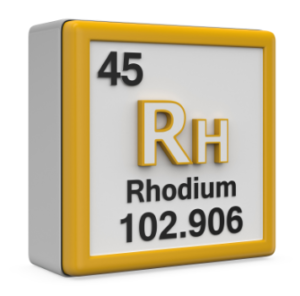 Rhodium, the rare and precious metal known for its brilliant, silvery-white appearance, has been gaining increasing attention in the world of investments. With its unique properties and scarcity, many investors are wondering if they can invest in rhodium and what potential returns they could expect. In this article, we will explore the ins and outs of investing in rhodium and whether it could be a lucrative addition to your investment portfolio.
Rhodium, the rare and precious metal known for its brilliant, silvery-white appearance, has been gaining increasing attention in the world of investments. With its unique properties and scarcity, many investors are wondering if they can invest in rhodium and what potential returns they could expect. In this article, we will explore the ins and outs of investing in rhodium and whether it could be a lucrative addition to your investment portfolio.
First and foremost, it is important to understand what rhodium is and why it is so highly coveted. Rhodium is a member of the platinum group metals, along with platinum, palladium, and others. It is incredibly rare, with estimated global reserves of only around 30,000 kilograms. This scarcity, combined with its unique properties such as high corrosion resistance and reflectivity, makes rhodium a valuable asset in various industries, particularly in the automotive sector for catalytic converters.
In recent years, the price of rhodium has experienced significant fluctuations. In 2020, the price of rhodium soared to record highs, surpassing even the price of gold. This surge was largely driven by increased demand from the automotive industry, as stricter emissions regulations required higher amounts of rhodium in catalytic converters. The price has since stabilized but remains relatively high compared to historical levels.
So, can you invest in rhodium? The short answer is yes, but it is not as straightforward as investing in more traditional assets like stocks or bonds. Rhodium is primarily traded in the form of physical bullion or through derivative products such as futures contracts. One of the most popular ways to invest in rhodium is through exchange-traded funds (ETFs) that track the price of rhodium. These ETFs allow investors to gain exposure to the metal without having to physically store or transport it.
Investing in rhodium can be a risky proposition, as the price of the metal is highly volatile and subject to various external factors such as supply and demand dynamics, geopolitical tensions, and economic conditions. Additionally, rhodium is not as liquid as other assets, meaning that it may be more difficult to buy and sell quickly without significant price fluctuations.
For those looking to invest in rhodium, it is essential to do thorough research and consider the potential risks and rewards. As with any investment, diversification is key to mitigating risk. Investing in rhodium should be seen as a long-term strategy, rather than a get-rich-quick scheme.
One of the main advantages of investing in rhodium is its potential for high returns. When the price of rhodium is on the rise, investors can see significant gains in a relatively short period. However, this also means that the metal is susceptible to sharp declines, so it is essential to keep a close eye on market trends and be prepared for fluctuations.
Another advantage of investing in rhodium is its hedge against inflation and currency devaluation. As a tangible asset, rhodium can act as a store of value in times of economic uncertainty, preserving wealth and providing a buffer against market volatility.
In conclusion, while investing in rhodium can be a potentially lucrative opportunity, it is essential to approach it with caution and careful consideration. The metal’s scarcity and unique properties make it a valuable asset, but its volatile nature and limited market liquidity mean that it may not be suitable for all investors.
If you are interested in diversifying your investment portfolio and are willing to take on some risk, rhodium could be a viable option. However, it is crucial to do your due diligence, seek advice from financial professionals, and stay informed about market trends. With the right strategy and a long-term perspective, investing in rhodium could be a rewarding endeavor.